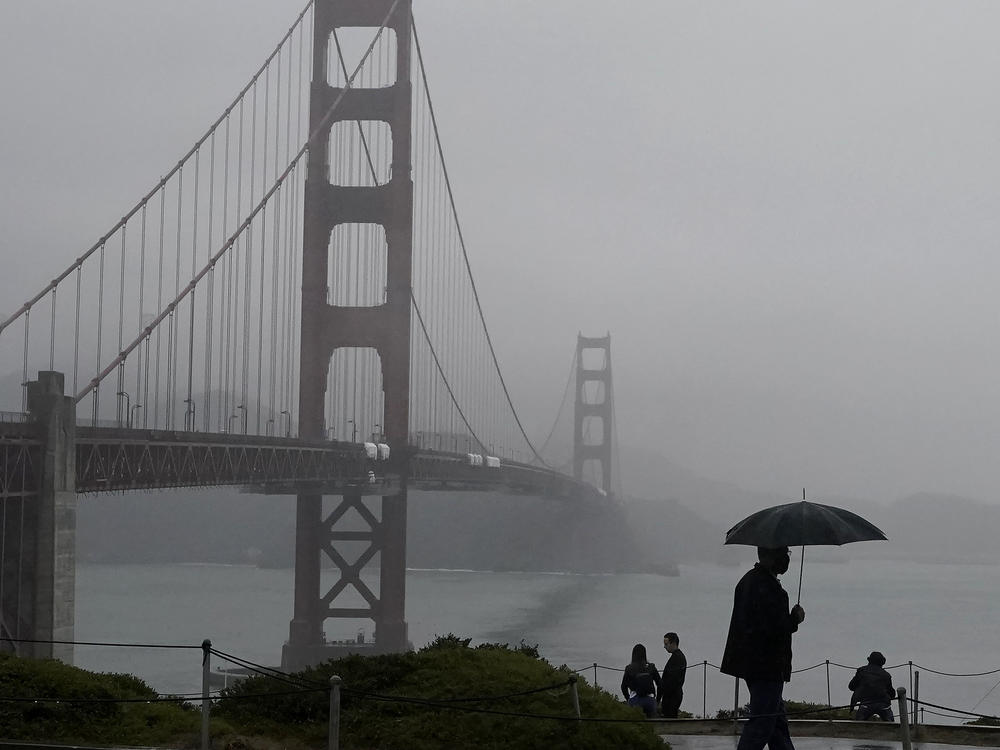Section Branding
Header Content
Strong storms are heading toward drought-parched California
Primary Content
A series of strong storms is expected to bring powerful wind, mountain snow and substantial rainfall to the Western U.S., including drought-affected California. The storms could also ease wildfire season in some places in the state.
Areas of California saw showers from the system Wednesday, with progressively stronger storms predicted to follow. Forecasters expect the most powerful storm late Saturday into Tuesday. Parts of Northern California could get more than 10 inches of precipitation over the next week, according to the Center for Western Weather and Water Extremes at the University California, San Diego.
Areas in the state desperately need it. The Pacific Northwest is weathering an exceptional drought, including in California, where August 2021 was the driest and hottest August on record. California's most recent water year, which stretches from October to September, was the driest since 1924, according to a report from the California Department of Water Resources.
Gov. Gavin Newsom extended a drought emergency declaration statewide on Tuesday and urged Californians to conserve more water.
Experts say precipitation from the upcoming week's storms won't end the drought but will be a good start to California's new water year. The heavy rain and snow could have another benefit: It's possible it could soak vegetation enough to end fire season in central and Northern California.
But experts warn that the rainfall could also combine with California's recent fire season to create dangerous burn-scar flooding and debris flows in areas downhill or downstream from places devastated by wildfires.
"Rainfall that would normally be absorbed will run off extremely quickly after a wildfire, as burned soil can be as water repellant as pavement. As a result much less rainfall is required to produce a flash flood," the National Weather Service cautions. Officials say they're most concerned that mudslides could occur in areas with burn scars from the Caldor and Dixie fires.
For details on the incoming storms and their potential effects, read more from member station KQED.
This story originally appeared on the Morning Edition live blog.
Copyright 2021 NPR. To see more, visit https://www.npr.org.

